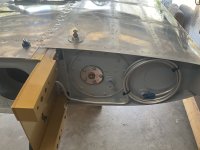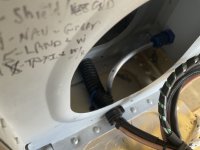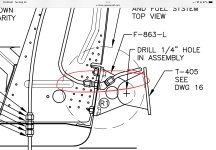I decided to vent the fuel tanks rocket style instead of re-entry into the fuselage. The one thing I didn’t want to do was to put the exit in the wing root fairing so I went thru the wing spar and exited out the bottom skin. I also added a tiny hole on top of the line just before it exits in case the exit fittings were to ice up.
Attachments
Last edited:







